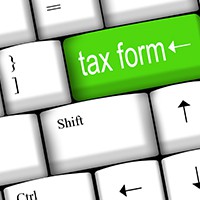Last updated: September 06 2023
Refund Examination Questionnaires: An New Challenge for Business Owners

Knowledge Bureau
Are you aware of CRA’s new refund “verification” questionnaires? These have far-reaching queries about business and rental activities, as well as the submission of personal information – everything from utility bills and insurance policies, bank statements and credit to verify residency and daily living expenses at each location. Taxfilers and their advisors need to become familiar with them now. Why? Because it’s going to take a long time to get them done when CRA comes calling! Here’s what you need to know:
Let’s start with Form RC683: Refund Examination Program - Business Information. It’s an important “aha” to have your Audit Defence package ready if CRA requests it:
- Preliminary information – To be sent in with books and recorded requested by the CRA:
- Business registration certificate
- Sales records
- Operating expense records
- Banking records (statements, duplicate deposit slips, cancelled cheques
- Sales journals, cash receipts journals, cash disbursement journals, general journal
- General ledger
- Receipts: separate these according to claims they related to and as listed on income and expense statements
- Descriptive Analysis: This is where the heavy lifting comes in. You will need to spend hours on this if you don’t already have the business planning done. Describe the following (deep breath):
- The nature of the business you are operating
- Principle product or services provided
- Name of partners, together with their address, phone and SINs
- Length of time in business including start date
- What were your short term (0-2 years), long term (3-15 years) when you started?
- In what year did you expect to make a profit?
- Did you prepare projections or plans – if yes, what year and attach them
- What training or experience did you have related to your business before you started?
- Did you make any capital purchases if yes, what was the amount paid and purpose of each purchase?
- Do you hold a full time job in addition to operating your business? If yes, how much time do you spend on your business each day?
- Do other family members help? If so provide the following information for each:
- Type of work they do
- Number of hours each person works per week
- Amount of salary and how this was calculated
- Amount paid to unrelated person for same work
- Skills and knowledge each person contributes to the business
- Provide SIN for each person you employ and tell if/how they are related to you.
- Has the business been profitable since you began?
- If yes, tell the years and amount of profit you had. (You’ll want to make sure you are reviewing the statements you sent in to CRA in each year with your tax return)
- Explain why you have had losses for each year under review
- Provide a detailed projection of how you intend to develop your business into a profitable enterprise – time frames, capital expenditures, marketing plans, estimated income and reductions in overhead.
- Provide current financial data to support this.
- Who are your regular customers?
- Any of them related to you?
- How do you determine the charges to relatives?
- Location of the business
- From home? Provide a floor plan of the whole home and the area you rent to the business/use personally
- List of rooms in the whole house and those used exclusively for the business including square meters
- Promotional activities used to market your products
- Communications – do you have a separate phone for business? Provide the number if so.
- Auto – do you use a personal auto for business?
- If so, describe the activities you use it for
- Make, model, year of car
- Annual operating costs
- Total kilometers and annual business kilometers
- Log books
- Lease or purchase agreement
- Loan agreement
- Copy of insurance policy
- Copy of ownership and registration
- Accounting, consultative services or tax preparation services for which expenses were deducted and include
- Names, addresses, phone and amounts paid and how paid in each case.
- Copies of invoices provided
- Details of any agreement you made in case of a reassessment
- Any other relevant information about your business.
This form requires certification of authenticity and its completeness, so it will be a problem if you only have a couple of the 50 or so pieces of information requested here. If you have nothing, now is a good time to gather up the information and/or seek help from a professional.
Make a Difference: Advisors, sharpen your business plan writing skills. It’s essentially what CRA is asking your business owner clients to do as part of their refund verification process. This also sets up their audit defence before sending money back to the client. Be ready to make a difference.
To help answer “What training or experience did you have related to your business before you started? “. Check out the DMA™ – Small Business Management Services Specialist Program. It’s the one designation you can’t be without when CRA audits your business.
For great educational resources for business owners, check out the CE Savvy Biz Ed Micro courses:
Tax, accounting and financial advisors: For comprehensive training on audit defence strategies, don’t miss the CE Summit on September 20.
Or for personal, friendly assistance call us 1-866-953-4769

